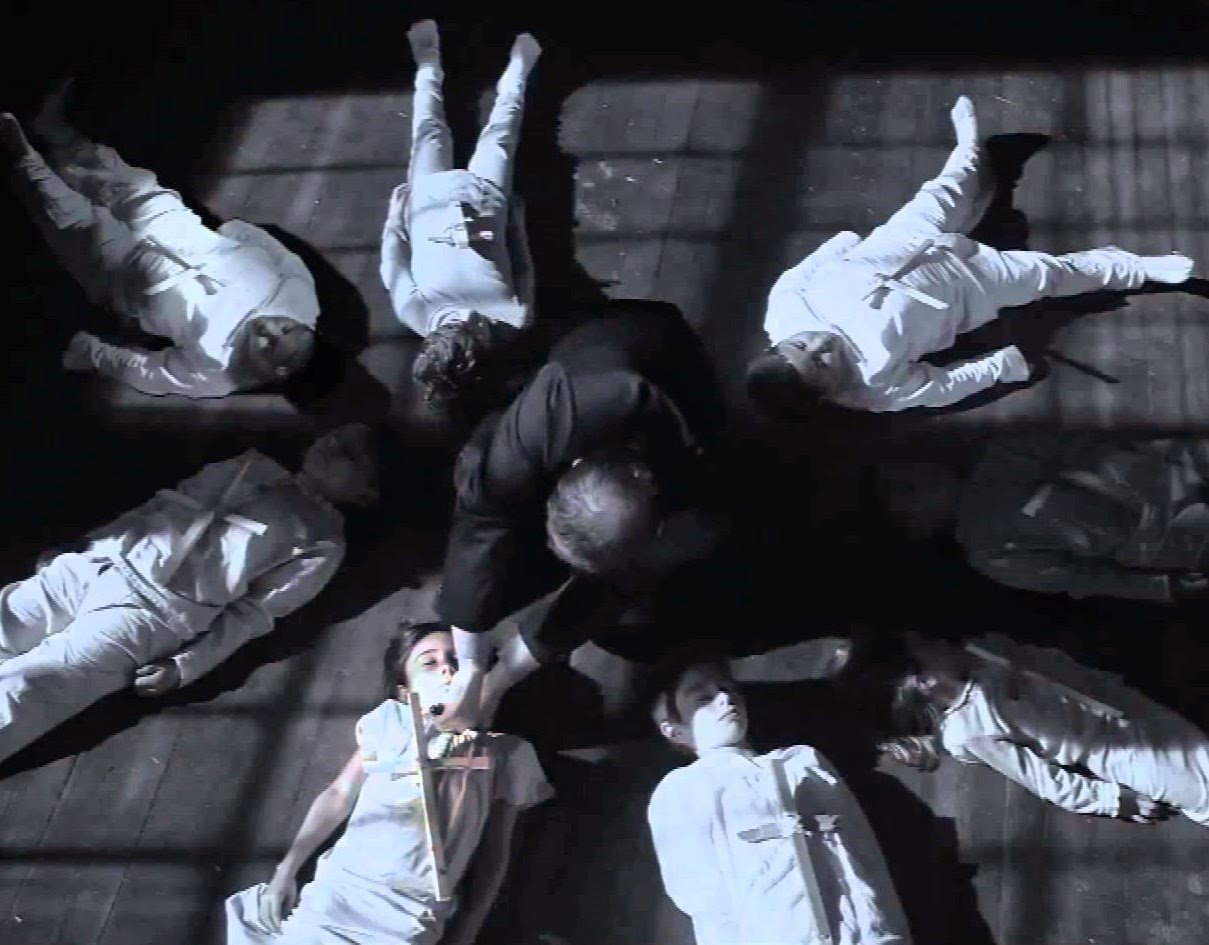Hall Baltimore is a third-rate writer who stops in the small town of Swann Valley on his book signing tour. When the eccentric sheriff, Bobby LaGrange, shows Hall a body in the morgue with a large stake in its chest, Hall becomes involved in the town's weird and murderous past while struggling with some demons of his own.
This output from Francis Ford Coppola stars Val Kilmer as Baltimore and Elle Fanning (I swear to goodness, all those freaking Fanning girls look and sound exactly alike) as Virginia, is described as a horror thriller, but I think that's only because of the element of vampirism in it. And even that is really just a metaphor and doesn't have much to do with what the movie is ultimately about. But please don't ask me what the metaphor is because I have no idea.
Also don't ask me what the deal is with the town's clock tower that has seven faces that all tell different times. That's symbolic of something, I'm sure, but all the movie tells me is that time has no meaning. For the town? For Baltimore? Yes? No? Something more than that? You let me know.
I cannot fault the movie at all for its look - it is gorgeous, with really excellent techniques used to enhance the color and contrast in some scenes. The picture I used on here of Kilmer and Fanning really does not do that scene justice. Much of the meat of the story is told through Hall's trippy dreams and the effects for these scenes is really stunning. There is an odd blue tint for the background and for Val, but Elle is startling white, so much so that she glows, and both figures are crystal clear against the slightly out of focus background. The pink of her makeup, and later on the use of red in another setting, are the only real colors used in the dream scenes and I loved it. I love watching a movie that is so interesting looking that you are fascinated by every single detail on screen - I even had to rewind this scene a bit because I missed some of what they were saying. Too distracted by pretty things. Nice work. Elle's costuming in this scene was very nice, too, and alluded to the film's gothic inspirations.
Hall is led through most of his dreams by Edgar Allan Poe, who once slept in a hotel in Swann Valley, and it is obvious that Hall makes the unconscious connection between him and the famous poet and uses him as his guide to work through his unresolved issues concerning his dead daughter, Vicky. Poe had a young wife (a creepily young wife - like, she was 13 years old when he married her) named Virginia, and all his poems about a lost love were about her. Hall also uses the story of the town priest who murdered all the children in his care, including a young girl named Virginia (hm, interesting) to assuage his guilt over the fact that he was drunk while his daughter, another girl with a "V" name, was killed in a boating accident. It's a new way to tell a familiar story and it works here, especially because of Hall's profession as a writer. Baltimore is also the town where Poe died, another allusion for sure.
 Twixt is also quite funny at times, a trait that I found a welcome if not and unexpected surprise. The pinnacle scene being when Kilmer's character is trying to talk himself out of his writer's block and eventually ends up doing all kinds of voices and impersonations, including Marlon Brando. Very funny stuff, Val, excellent job! The character of Bobby LaGrange also serves as much of the comic relief as he is very much the odd duck of this town. He's into Baltimore's books when nobody else knows who he is, and he has a morbid fascination with the dead body in the morgue and making it into a story with Baltimore. There's more to that at the end, of course, but until then, LaGrange exudes this weird maniacal excitement about the whole situation in his town which makes for a fun introduction to the story for Baltimore and for the audience.
Twixt is also quite funny at times, a trait that I found a welcome if not and unexpected surprise. The pinnacle scene being when Kilmer's character is trying to talk himself out of his writer's block and eventually ends up doing all kinds of voices and impersonations, including Marlon Brando. Very funny stuff, Val, excellent job! The character of Bobby LaGrange also serves as much of the comic relief as he is very much the odd duck of this town. He's into Baltimore's books when nobody else knows who he is, and he has a morbid fascination with the dead body in the morgue and making it into a story with Baltimore. There's more to that at the end, of course, but until then, LaGrange exudes this weird maniacal excitement about the whole situation in his town which makes for a fun introduction to the story for Baltimore and for the audience.Whether you watch Twixt for Coppola or Kilmer, for the story or the visual element, I don't think you're going to be too disappointed in what you see. It offers up some great performances, and interesting and stunning images that despite any confusing elements to the story make it one to see for any film fan.




I can't imagine watching a film for Kilmer! The box art has distracted me to pick up the dvd at the rental store a few times, but I haven't worked up the audacity to sufferer though Kilmer for the sale of Coppola.
ReplyDeleteKilmer's not that bad at all here, like I said he's actually pretty funny.
Delete